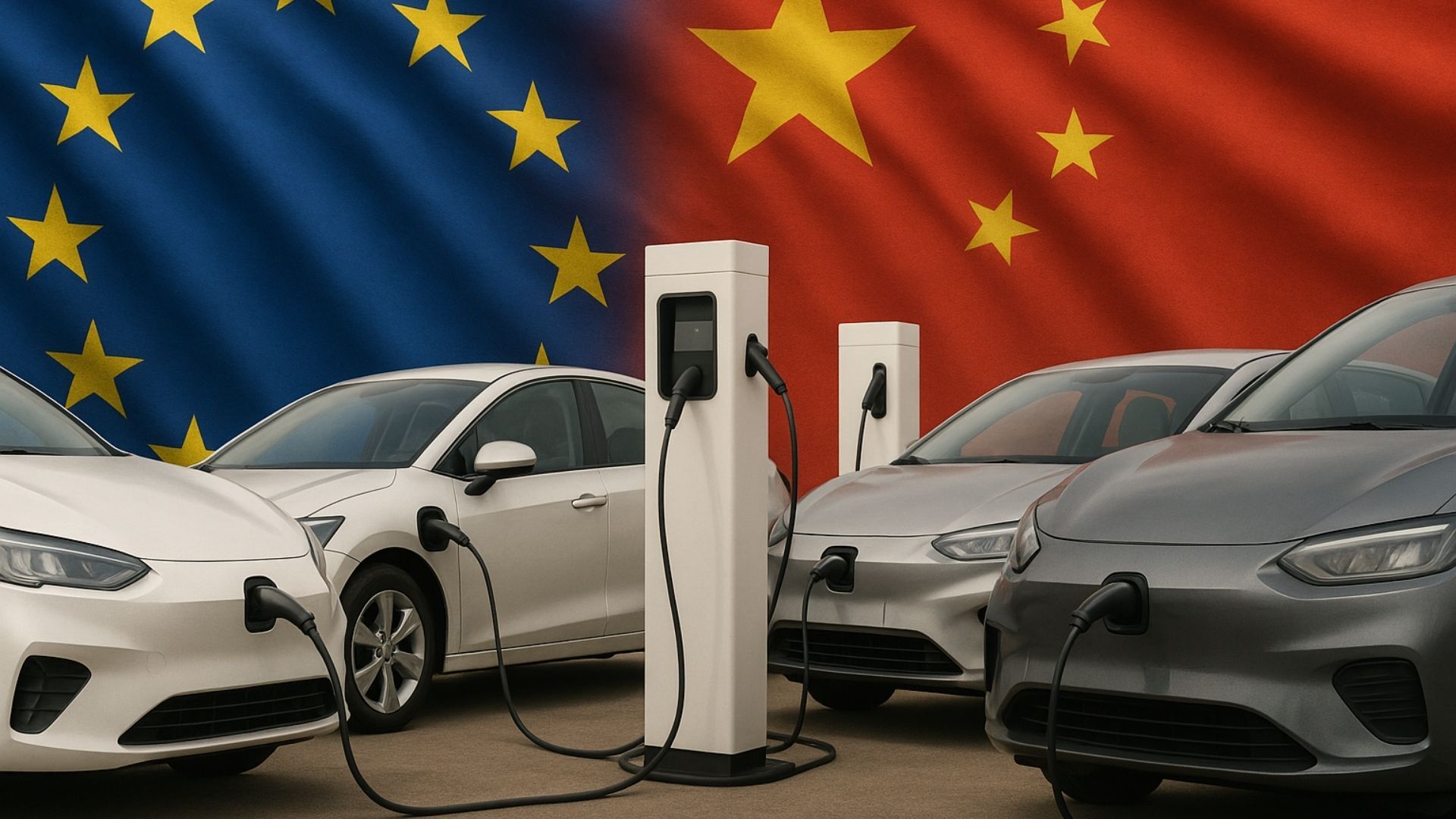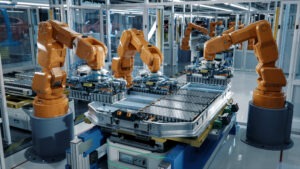In brief
Electric vehicles represent the future of the automotive industry. The sector remains one of the pillars of European manufacturing, and it is therefore inconceivable to throw in the towel in the race for competitiveness.
However, to maintain a strong position in vehicle production, Europe must move beyond its current phase of ambiguity and fragmentation by adopting a strategy capable of combining: open trade, a strengthened industrial base and renewed diplomatic activism.
Today’s landscape reflects a form of “asymmetric competition.” Chinese companies benefit from economies of scale, substantial public support and internal regional competition. This has fuelled market development, innovation and cost reductions. In contrast, Europe faces a fragmented single market, limited and uncoordinated industrial policies, and a production and consumer base not yet fully aligned with electric mobility.
The European Union’s response has been ambivalent and uneven. Achieving the necessary level of coordination among Member States is a complex challenge. In this context, a governance focused on foreign investment in strategic sectors – such as batteries, electronic components and digital infrastructure – would help reduce internal competitive imbalances and strengthen the EU’s negotiating power. Centralised governance in a limited number of sectors would be more effective, combining regulatory consistency, support for innovation and the selective attraction of capital.
A strategy of “selective cooperation” would help Europe to establish strategic segments of green technologies within its borders through shared rules and standards and the principle of reciprocity. This would include joint ventures, technology transfer licensing agreements, compliance with environmental and social production standards, and minimum requirements for the localisation and transparency of investments.
In a global environment marked by fragmentation and protectionist pressures, Europe and China share a mutual interest in upholding multilateralism as the only viable path to addressing the climate crisis. Joint efforts in support of COP30 could provide a foundation for positive collaboration, fostering greater mutual trust and facilitating negotiations on the most contentious trade issues.
The transformation of Europe’s automotive industry and the challenge posed by China
The transition to electric mobility represents a systemic industrial challenge for the European Union. The stakes go beyond the goal of decarbonisation: they concern Europe’s manufacturing and innovation capacity, as well as its geoeconomic and geopolitical balance in a context of increasing fragmentation of trade rules.
The rise of Chinese industrial innovation is redefining global value chains and deeply influencing the technological trajectory of the automotive sector, within a dynamic that extends well beyond the industry’s boundaries.
Indeed, the acceleration China has achieved in recent years in both product and process innovation has enabled numerous domestic companies to take on an increasingly central role in developing and producing critical technologies, strengthening the country’s leadership in strategic areas. This momentum has been strongly supported by the state in defining industrial priorities, with the aim of positioning China as a global leader in the large-scale production of components, materials and technologies essential to the country’s industrial development.
These objectives have been translated into a system of large-scale public interventions: incentives, subsidised financing and protectionist measures for the internal market. This process has played a decisive role in modernising the manufacturing sector, while also aiming to reduce dependence on foreign technologies and promote technological autonomy in strategic areas such as electric vehicles, industrial robotics, renewable energy, batteries and critical materials. However, the success of China’s industrial strategy has put pressure on the stability and principles of competition that govern international trade. These factors, combined with protectionist and unilateral pressures from other major global economic players, have undermined trust in multilateralism, making it harder to reach effective international agreements and uphold shared rules.
China’s approach is reflected in the rapid rise of companies such as BYD and CATL, which have become central players in the global transition to electric mobility. Their growth, driven by national industrial policy, is now having significant effects on international trade and industrial balances. In particular, the surge in Chinese exports of electric vehicles and lithium batteries in recent years has led to mounting tensions with the European Union, prompting the Commission to introduce defensive measures in the form of tariffs on Chinese imports.
All these dynamics have created a distinctly asymmetric competitive environment. On the one hand, Chinese companies benefit from economies of scale and public support that have enabled them to expand rapidly during a critical phase of market development. Added to this is strong internal competition between regions, which pushes companies to innovate rapidly, reduce costs and expand into new markets.
Europe, on the other hand, is faced with a single market that is still fragmented, limited and poorly coordinated industrial policy tools, and a production and consumption base that is not yet fully aligned with electric mobility. This disparity widens the competitiveness gap and underscores the urgency of a strategic response at the European level.
Europe’s ambivalence between protection and openness
The European Union’s response has so far been marked by ambivalence and inconsistency. Some Member States maintain strong bilateral relations with China; others, while in favour of maintaining an open dialogue, adopt a more cautious stance. This heterogeneity weakens the credibility of European action and risks triggering a race to the bottom among Member States vying to attract Chinese investment, thereby eroding the competitiveness and cohesion of the single market. A notable example is the Hungarian case, where subsidies were granted to BYD for the construction of an electric vehicle plant.
The Commission has acknowledged these risks, as highlighted in the Industrial Action Plan for the European Automotive Sector and the Clean Industrial Deal. Yet, effective responses require a level of coordination among Member States that has so far proven difficult to achieve in practice. More centralised governance of foreign investment in strategic sectors—such as batteries, electronic components and digital infrastructure—could help reduce internal competitive imbalances and strengthen the EU’s negotiating power.
Towards a new strategy of selective cooperation
The alternative to unconditional openness or protectionism lies in a strategy of selective cooperation, based on shared rules and standards and the principle of reciprocity. This approach aims to boost the competitiveness of Europe’s industrial ecosystem, promoting the diversification of critical resource supply sources and protecting citizens’ privacy.
In this regard, it is vital to build on existing industrial partnerships and those that could be developed with foreign companies already present in Europe—through joint ventures or licensing agreements—which could facilitate knowledge transfer, joint technology development and the upskilling of the European workforce.
This openness should take place within a framework of shared rules among Member States, requiring Chinese investors to meet environmental, social and production standards, ensure effective knowledge transfer and involve local value chains. At the same time, better coordination among Member States is essential to define common minimum requirements for the investment localisation and the transparency of public incentives granted, in order to avoid downward distortions of internal competition.
The aim is to attract and embed strategic segments of global value chains in Europe, helping to build a competitive and innovative industrial ecosystem for the large-scale production of climate technologies. For Italy, advancing cooperation agreements in a further phase of development of the MoU signed in July 2024, including these guidelines, could mark the course for a new European direction.
It also remains important to strengthen European coordination on industrial policy. Existing instruments—such as IPCEIs (Important Projects of Common European Interest), investment programmes and green transition funds—are often fragmented and insufficiently responsive. A more effective EU-level coordination is needed, capable of combining regulatory consistency, support for innovation and selective attraction of capital. To guarantee the strategic use of public resources, Member States and European agencies should focus on a limited number of priority sectors. It will also be crucial to balance the allocation of funds between European companies and projects involving Chinese actors in a transparent manner, so as to preserve a balanced diversification of the industrial ecosystem.
Reviving multilateralism to stabilise industrial relations
The challenge posed by China in electric mobility is not only commercial in nature, but also fundamentally strategic. Electric vehicles represent the future of the automotive sector, which remains one of the key pillars of European manufacturing. For this reason, it is inconceivable to opt out of competing in this field. To maintain a strong position in vehicle production, Europe must move beyond its current phase of ambiguity and fragmentation, adopting a strategy that combines regulated open trade, a strengthened industrial base and renewed diplomatic activism.
In a global context marked by fragmentation, industrial competition and challenges to international trade rules, reviving the multilateral dimension of the climate agenda could serve as a strategic lever for building more resilient relations. In the ongoing discussions between China and Europe—culminating in the upcoming visit of European leaders to Beijing at the end of July—one of the key issues to resolve will be the tariffs on Chinese electric vehicle imports into the European market. However, even if an agreement is reached, it is likely that relations between the two sides will continue to be shaped by strategic divergences.
In this context, joint support and consensus on strengthening the climate agenda ahead of COP30 could offer a foundation for positive collaboration, helping to foster greater mutual trust. This could, in turn, facilitate negotiations on more contentious issues related to public subsidies to industry, the nature of Chinese investment in Europe and the strategic management of critical resources. Agreements aligned with Europe’s decarbonisation objectives for 2030, 2040 and 2050 could pave the way for a new economic balance that safeguards the EU’s strategic interests in trade and industrial policy.








